Menu

Being a centre of excellence in immunology and having an effective network of collaborations with leading institutions all over the world, the IRB hosts 13 research groups and offers a unique scientific environment with access to state-of-the-art core facilities:
Imaging Facility
Manager: David Jarrossay, Diego Morone
This imaging facility is central to most of the IRB research projects. The IRB has a state-of-the-art flow cytometry facility that is run by David Jarrossay who takes care of the cell sorting, maintenance of the equipment, instruction and advice to the new operators, in addition to performing his own research. Diego Morone has a specific experience in confocal microscopy and high content cellular analysis and supervises all the microscopes present at the IRB.
Flow cytometry
The Flow Cytometry lab provides investigators with equipment and support for cell sorting (separation), acquisition, and analysis of flow cytometric data with a variety of state-of-art multicolor flow cytometry instruments.
Cell sorting is performed on a FACSAria III equipped with four lasers (488, 561, 640 and 405 nm excitation wavelengths) and 15 fluorescence channels detection. It can perform high speed sorting (up to 20, 000 events/sec) with high-purity (up to 99%).
Benchtop analyzers
The Flow cytometry lab is equipped with an advanced benchtop analyzer BD Fortessa equipped with four lasers (488, 561, 640 and 405 nm excitation wavelengths) and 16 fluorescence channels, one FACSCantoII (488, 640 and 405 nm lasers-eight colors), a FACSCanto I (488 and 640 nm lasers-six colors). The lab also acquired a SP6800, a Spectral Cell Analyzer from Sony (488 and 640 nm lasers excitation wavelengths with 405 nm laser to come) equipped with 32 channel PMT collecting spectra of all emitted lights with no need for conventional bandpass filters.
High throughput screening
Beside both FACSCanto equipped with HTS for acquisition of 96 and 384 wells plates, the lab has also been equipped with an Intellicyt (488 and 633 nm excitation-four colors) with automated platform (up to 45 plates per run) allowing high throughput screening for 96 or 384 well plates format.
The flow lab offers efficient support and high quality instruments. The staff provides cell sorting on BD FACSAria III, individual training on bench top analysers, maintenance of all instruments and assistance with experimental design, data analysis and troubleshooting.
Imaging
The Microscopy Facility at the IRB provides state-of-the-art imaging equipment and dedicated expertise for the most demanding research projects:
• Confocal microscope. Leica TCS SP5, fully equipped with 5 lasers, 4 new-generation hybrid detectors (HyD Leica technology), fast z piezoelectric stage for fast 3D live cell imaging, resonant scanner and aberration-corrected objectives for high-resolution imaging such as 20X multi-immersion objective or 100X 1.4 Oil objective.
• High-content screening system. Molecular Devices ImageXpress Micro 4, wide-field automated microscope for up to 5 fluorescence channels and transmitted light. The microscope is combined with a robot for automated acquisition and analysis of up to 45 plates. Software allows a very simple acquisition setup and provides modules for segmentation and analysis.
• Wide-field microscopes
– Nikon Eclipse E800 upright microscope;
– Nikon Eclipse TE300 inverted microscope, with incubator for live-cell experiments and Eppendorf FemtoJetmicroinjector;
– Zeiss Axiovert 200 inverted microscope, equipped with UV-corrected optics and TILLvisION software for ratiometric calcium measurement experiments.
• Multi-Photon Excitation Microscopy system.
LaVision BioTec TriM Scope combines both an upright and inverted microscope, equipped with two tunable pulsed NIR lasers and OPO for multi-colour simultaneous imaging on up to 5 channels.
With these systems we are able to perform most of the procedures for cell and tissue imaging, such as FRAP, FLIP, photoconversion or FRET and 3D reconstruction on both unclarified and clarified tissues.
We also offer support for sample preparation, image analysis, deconvolution and 3D reconstruction, thanks to a wide range of open software such as ImageJ / FIJI, R, CellProfiler, GNU Octave, as well as commercial ones, such as MATLAB (MathWorks), MetaMorph (Molecular Devices) and Imaris (Bitplane).\
Instrumentation
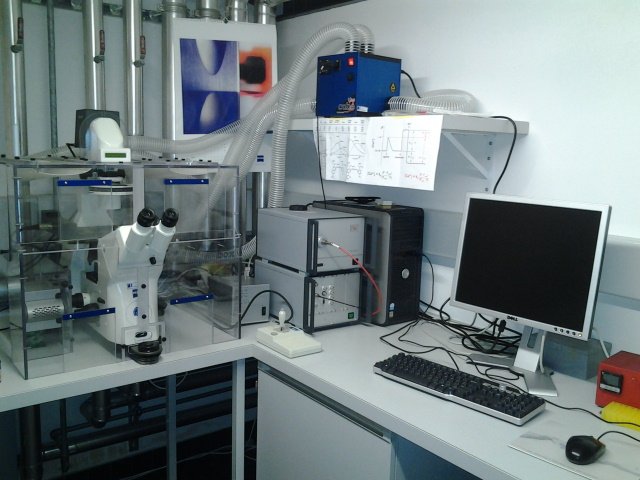
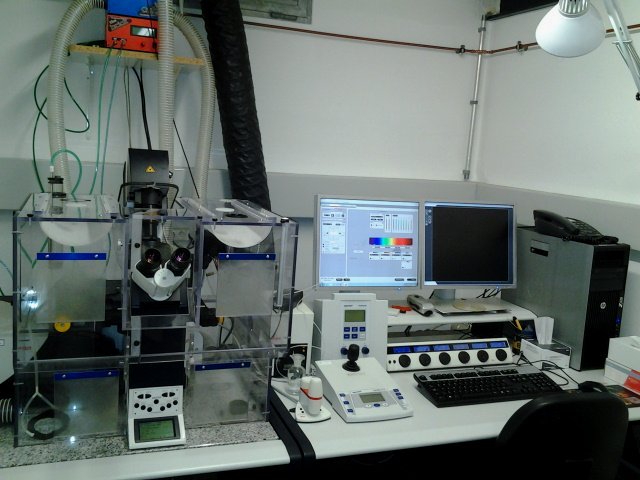
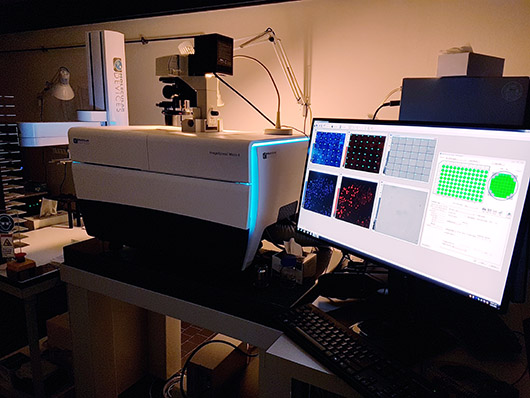
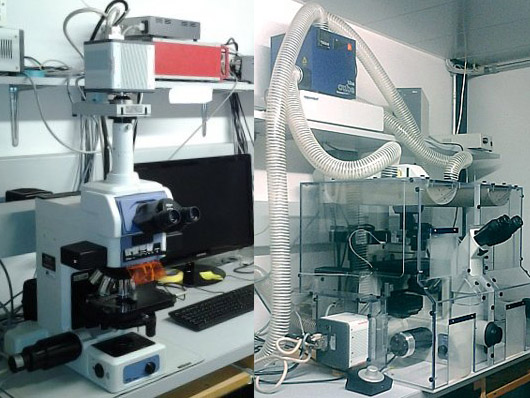
Gene Expression and Protein Production Facility (GEPP)
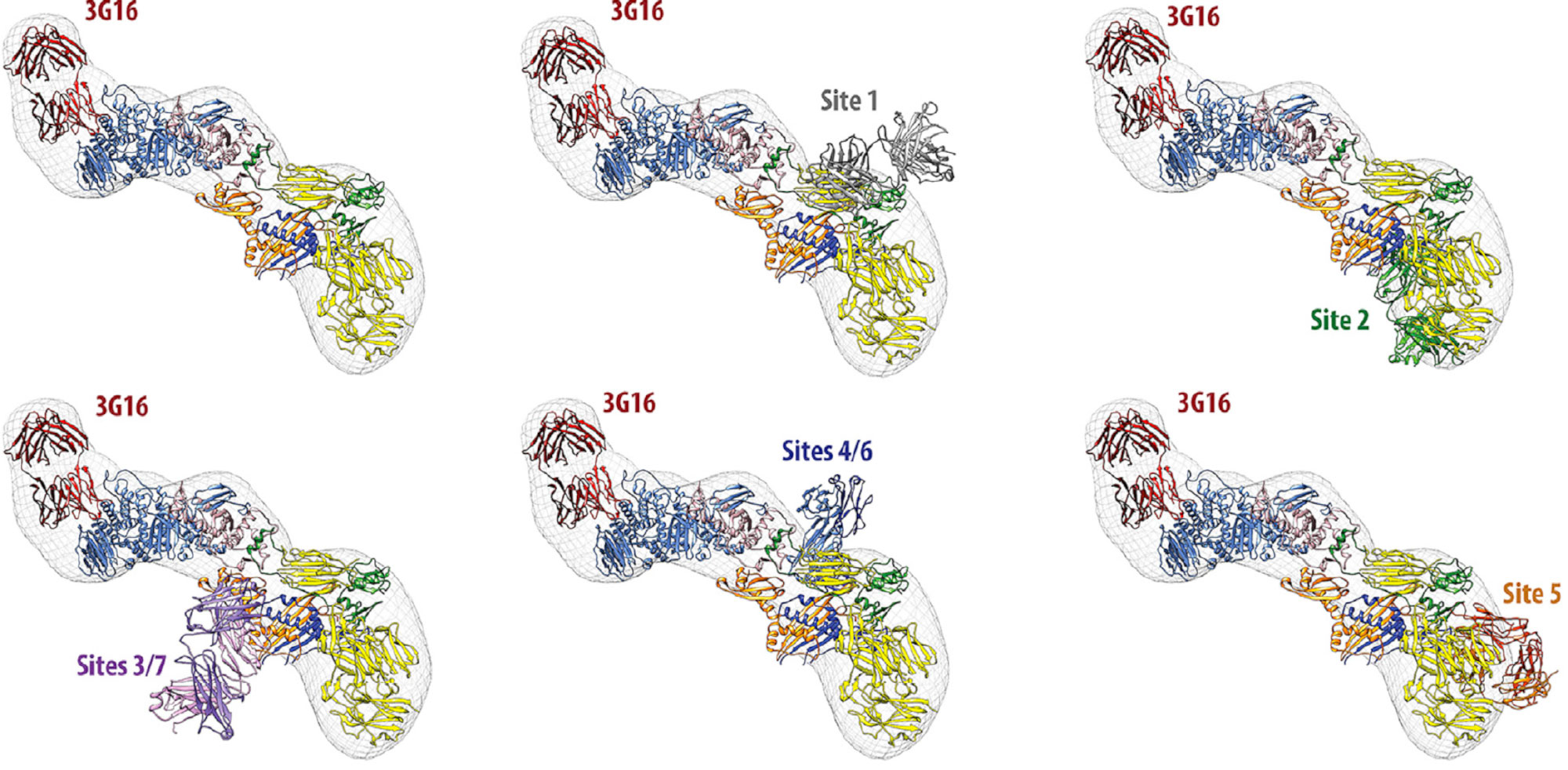
Manager: Laurent Perez
Researchers: Mathilde Foglierini Perez – Bioinformatician, Jessica Marcandalli – Technician Michela Perotti – PhD Student
The IRB has developed relevant competence in the field of protein-protein and antigen-antibody interaction applied to the study of inflammatory and infectious diseases.
The Gene Expression and Protein Purification facility (GEPP) helps IRB researchers with cellular biochemistry, protein expression and production but also develops and evaluates new techniques for protein production and purification. Assistance and information are offered to all IRB research laboratories. The facility is equipped for small to medium scale purification from cell free system, bacteria, insect and mammalian cell lines. It is currently specializing in the use of the baculovirus expression system and mammalian expression, especially for production of multimeric protein complexes. Depending upon the level of expression of a given protein, quantity ranging from milligrams to grams can be produced using resources at the facility. Finally, the facility is centralizing stocks of a large number of expression vectors for insect and mammalian cells.
Equipment available in the GEPP facility: ÄKTA™purifier, tangential flow filtration system from Millipore.
This facility is enhanced by collaboration with the Swiss Supercomputer Center located in Ticino as well as with numerous international institutions.
Bioinformatics Facility
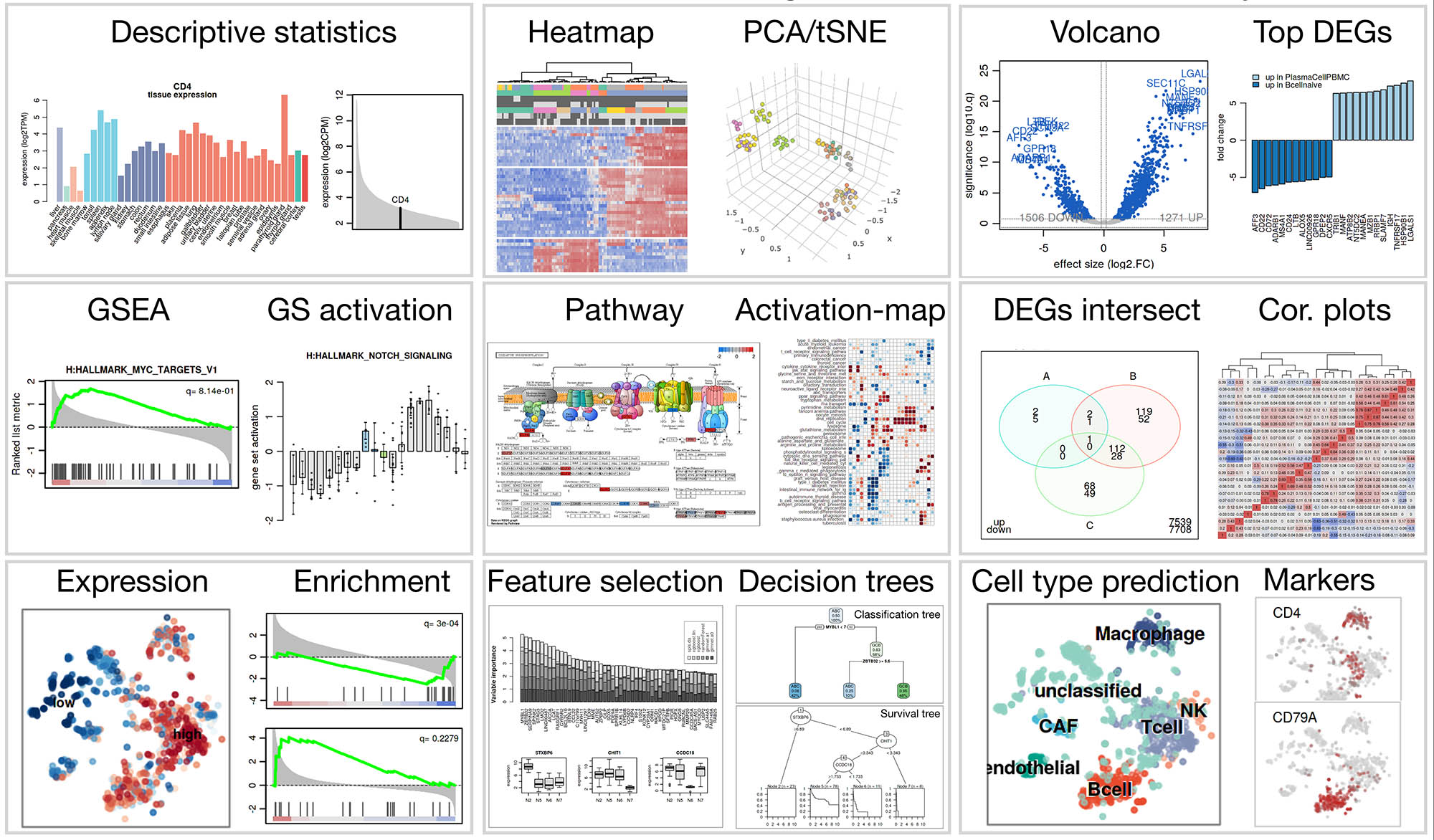
Manager: Ivo Kwee
Researchers: Murodzhon Akhmedov – Bioinformatician, Mathilde Foglierini Perez – Bioinformatician
The Bioinformatics Core Unit supports the research groups with computational and statistical services. Importantly, more than just a supporting role, we proactively identify and develop novel bioinformatics projects that can complement and in many cases drive our biologic research. We develop innovative data analysis tools, visualization software and database resources for genomics research in collaboration with the Dalle Molle Institute of Artificial Intelligence (IDSIA).
Tasks
• Immune cell repertoire analysis.
• Analysis of next-generation sequencing data.
• Multi-omics data integration.
• Functional analysis at systems biology level.
• Statistical and computational support.
Equipment
• Big memory computer servers: 64-core 512GB, 24-core 128GB + 2GPU.
• Linux computing clusters at IDSIA.
• Computing resources at the Swiss National Supercomputing Center (on demand).

Via Vincenzo Vela 6
6500 Bellinzona, Switzerland
Tel. +41 91 820 0300
Fax +41 91 820 0302
Facebook / Twitter
